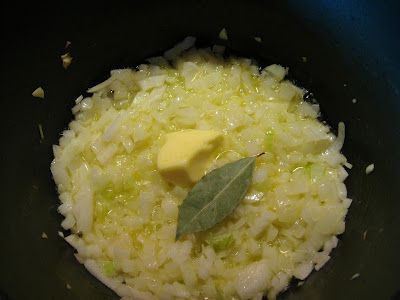Once in a while, like in every other household, it happens that I have no idea what will be for dinner until I start cooking.
An honestly, I really like that sort of challenge.
I have always liked to try and make the best out of what was at hand. Like that time when we had to figure out how to build something like a broom from what you can find in the forest (because the proper brooms were still at home). Or standin on a a stage and trying hard not to let the audience notice that it was not part of the script that some part of the set had just collapsed.
Things like that.
What I am actually trying to say here, is that like to improvise.
And every once in a while, on rare occasions, I get lucky and not only make do, but make something really good I would never have thought about otherwise.
Like that one, memorable day when I was shopping, my lovely wife next to me, and we found these lovely duck breasts. I had never made duck before, we only knew we loved it in almost every version.
So we bought them, with little to no idea what to make out of them actually.
Back at home, I checked what we had in the larder. Canned apricots, soy-sauce and apple-juice. Nothing stunning, but it gave me an idea.
And it turned out fabulous. Historically great.
Duck'n apricots has since become a household staple, and returns ever so often as soon as the weather is miserable enough to call for such pungent flavours. It is a hearty dish, sweet and spicy and tart and fragrant, and by now the smell of roasting duck always makes the tip of my tongue tingle in anticipation of that gravy.
Sort of like Pawlow's dog, only with less saliva.
Cooking this may result in the reception of several marriage proposals. Just don't say I didn't warn you.

Duck'n Apricots
(serves four)
800g duck breast (usually two, sometimes three filets)
2 cans of apricots
200 ml apple-juice, unsweetened
200 ml light soy-sauce
1 tablespoon apricot jam
1 teaspoon five-spice-mix
salt & pepper
Preheat the oven to about 180°C.
If necessary, pare the filets and remove remaining feathershafts. Cut the skin diagonally, trying not to damage the meat underneath. Rub with some salt and a generous amount of pepper.
It might look like unnecessary decoration, but I have found that the neater and the narrower I cut the skin, the crisper it gets. And admittedly, it does look nifty.
Drain the apricots, but keep the sirup.
In a large pan, heat a little bit of olive oil, until almost smoking. Fry the duck, skin side down, for a few moments, until it gets some colour. Turn and fry from all sides.
Take the pan off the fire and deglaze with the soy-sauce.
Watch out, this is, once again, the perfect moment for a truly memorable mess. Keep the meat in the pan while deglazing, skin side down, preferrably. It gives a lovely, dark colour to the meat.
Unfortunately, when I took the pictures for this dish, that was the step I had forgotten. I am still getting used to my new kitchen, and so, to my eternal shame, the meat is a little pallid compared to usually. Next time will be better, I promise.
Transfer the meat (skin side up, this time) onto an oven-proof dish and keep in the oven until the meat feels just firm when pressed with a spoon.
Put it a little higher than the middle, so the skin has a chance to get crispy. If you want, you can also add the grill, but that's risky business.
In the meantime, add the apricots, the apple-juice, 200 ml of the reserved sirup, the jam and the spices to the soy-sauce and bring to a rapid boil. Then turn down the heat and simmer until the first apricots start to look soft and a little frazzled.
By then, the gravy should have thickened sufficiently on its own, if not you can add some cornstarch mixed with cold water.
Take the meat out of the oven and leave to rest for a minute or two.
Cut into thin slices and serve with lots of sauce and pasta or rice.
This is one of the few dishes I have yet to find some decent vegetable side to. Though, I don't really miss it either, in this case.
Pasta is great for another reason besides the fact that pasta is a good thing by and in itself: when you put the water for the pasta on the stove at the same time you start frying the meat, both pasta and duck will be ready at the same time. Neat, isn't it?

Pasta and remaining sauce, even without meat, make excellent lunches the next day.


















